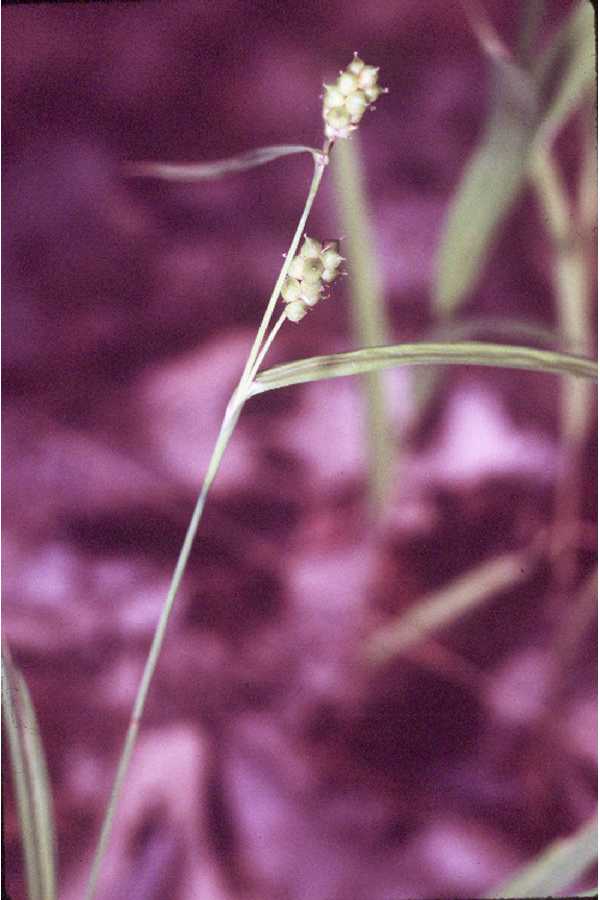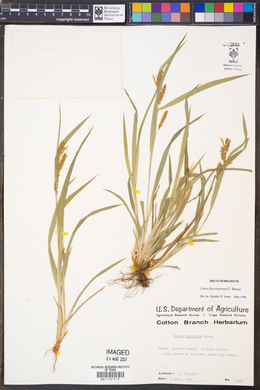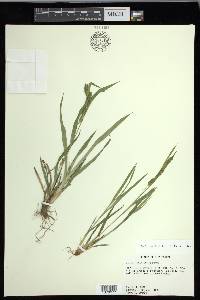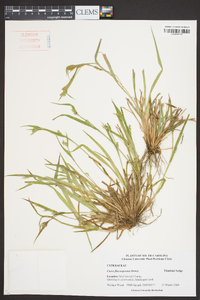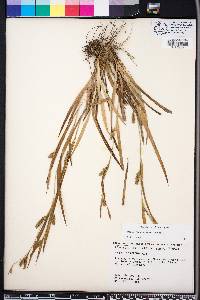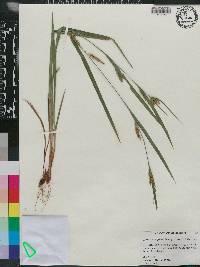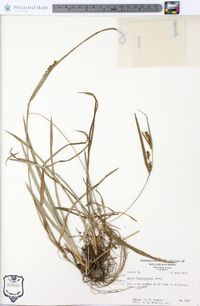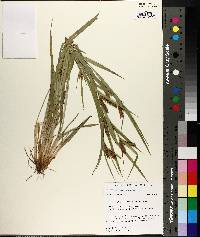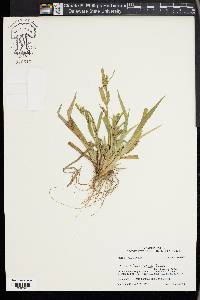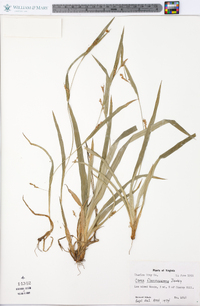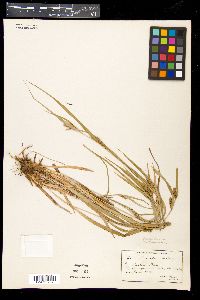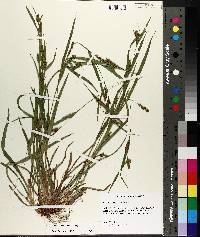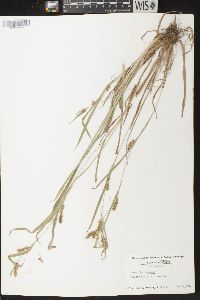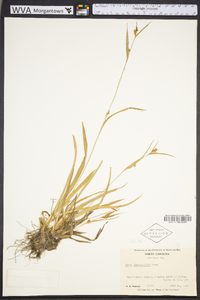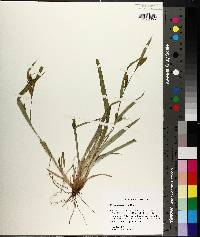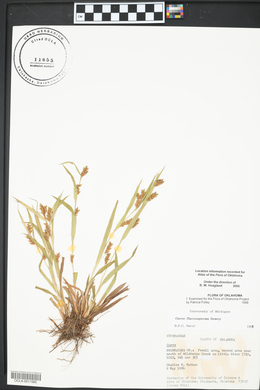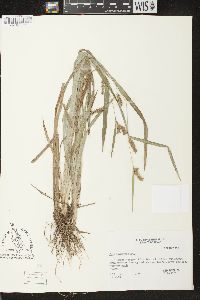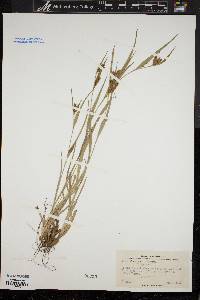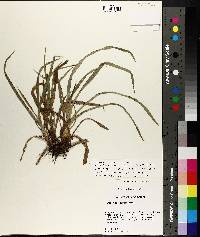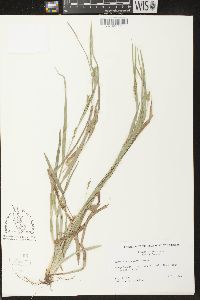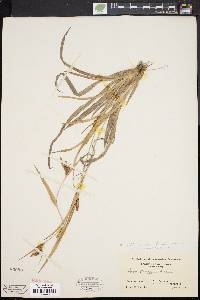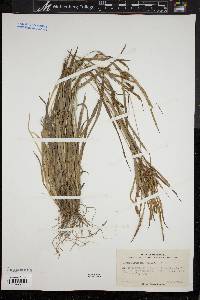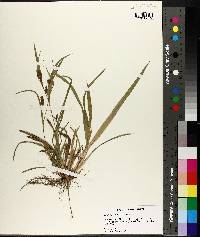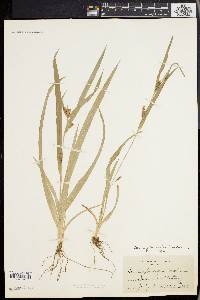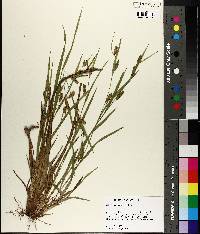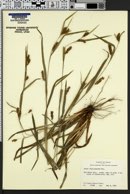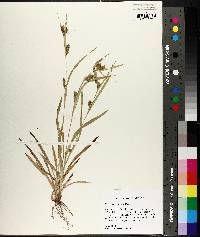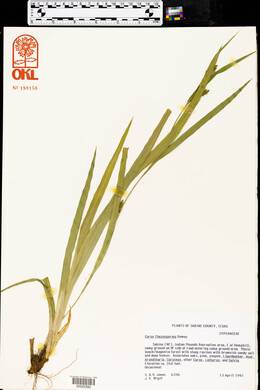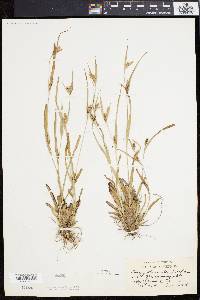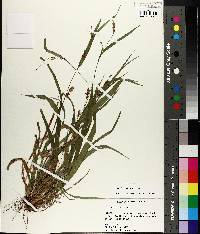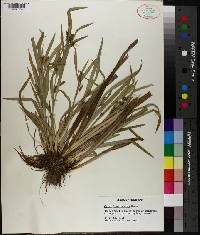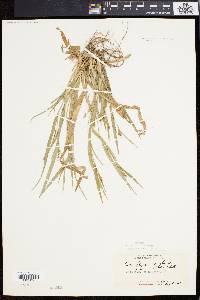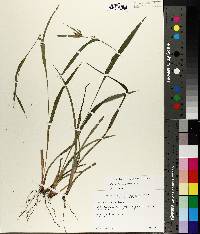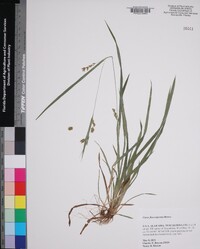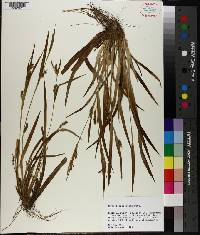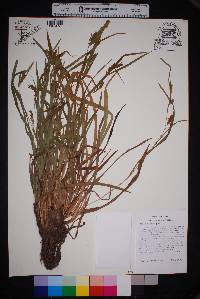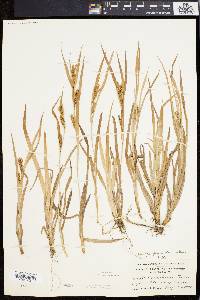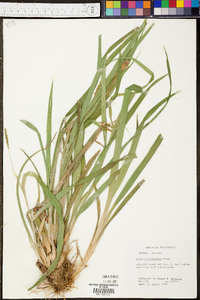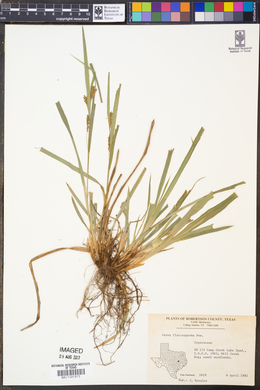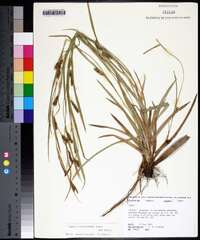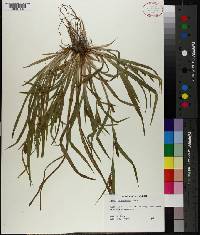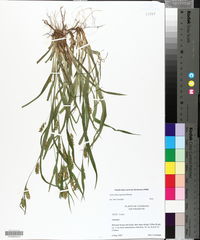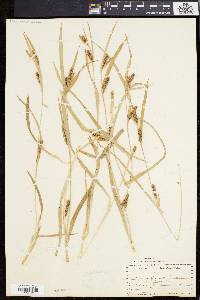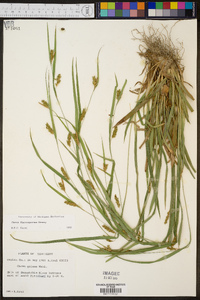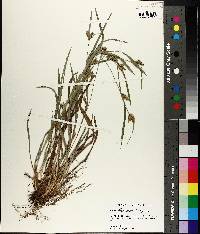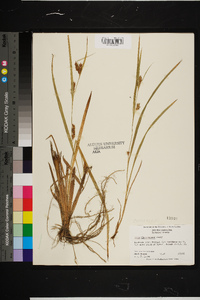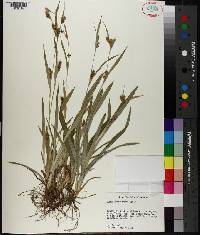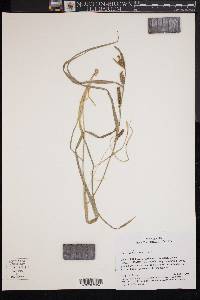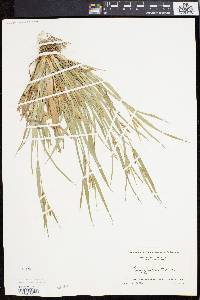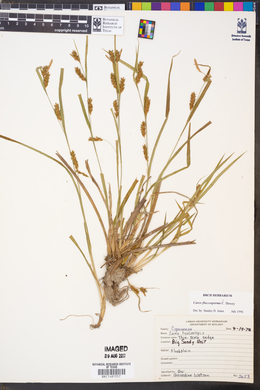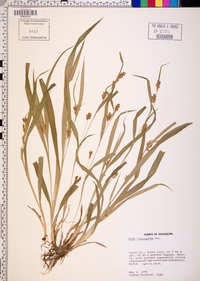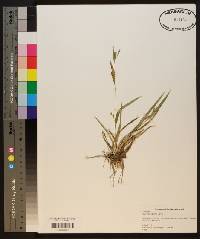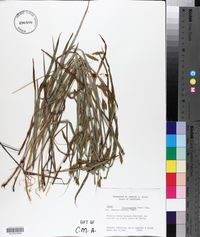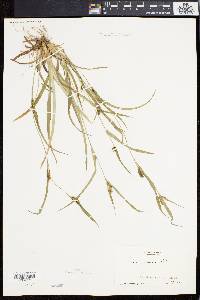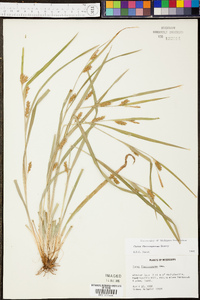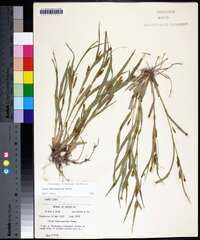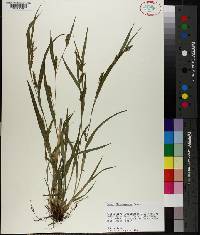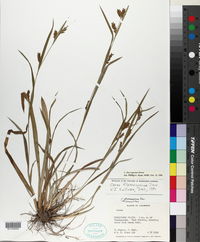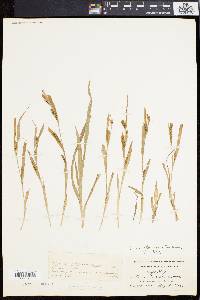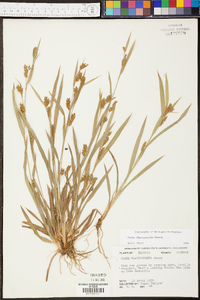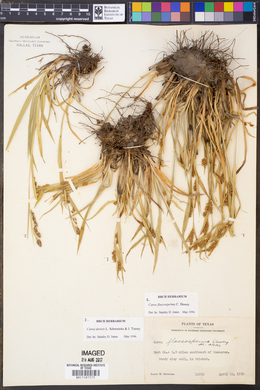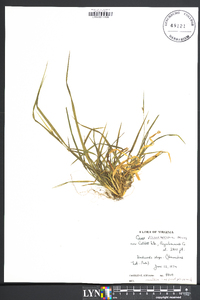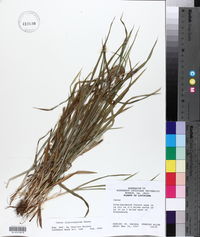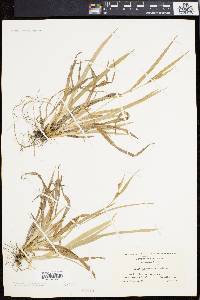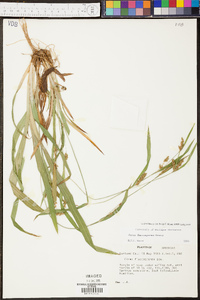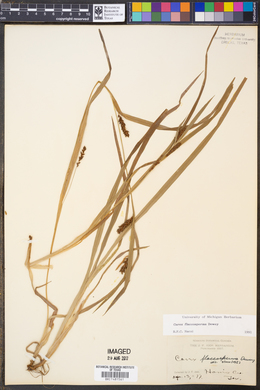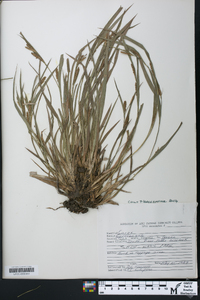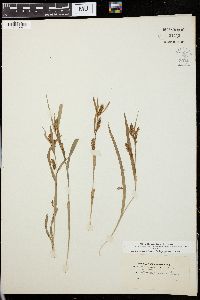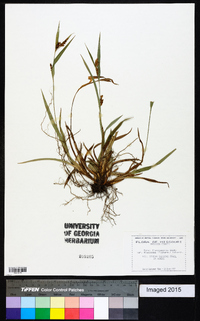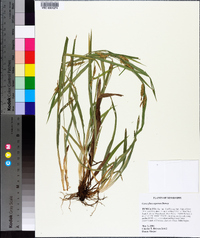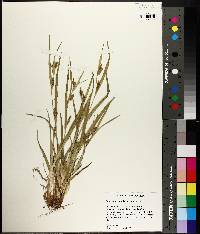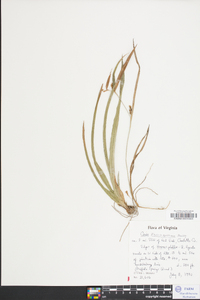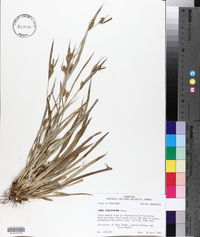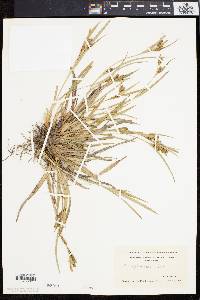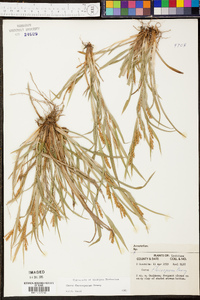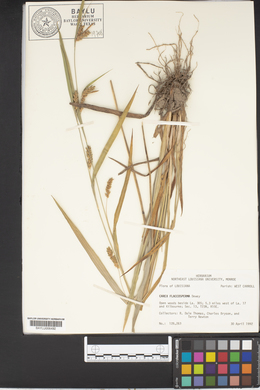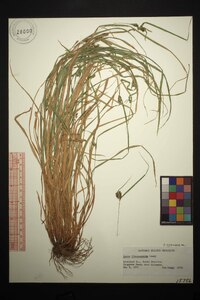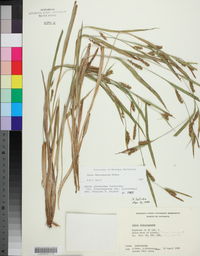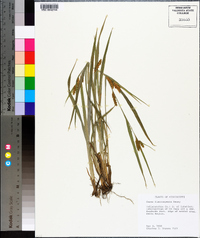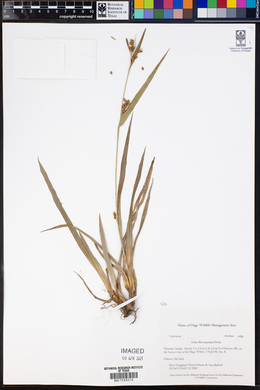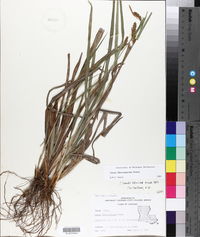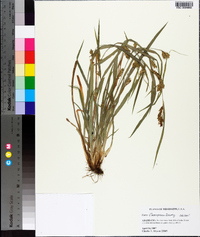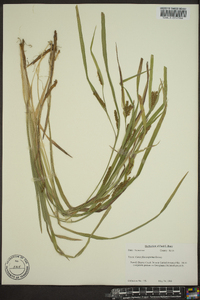
|
|
|
|
Family: Cyperaceae
Thin-Fruit Sedge, more...thinfruit sedge
[Carex laxiflora var. mutica, moreCarex microsperma] |
Plants densely cespitose; rhizome internodes 1.2-2.8 mm thick. Culms yellow-brown at base, 10-60(-75) cm. Leaves: sheaths glabrous; blades glaucous, widest blades 6.3-14.7 mm wide, smooth abaxially or sparsely antrorsely scaberulous on main veins. Inflorescences 0.40-1 of culm height; peduncles of lateral spikes smooth; peduncles of terminal spikes 0.7-20(-51) mm, barely to much exceeding lateral spikes; proximal bract sheath loose, abaxially glabrous, sheath front apex truncate; ligules (3-)4.7-9 mm; distal bract slightly shorter than to much exceeding terminal spike. Spikes 4-6, distal 2-4 overlapping; lateral spikes pistillate, with 12-39 perigynia, 11-41 × (5-)5.7-8(-9.6) mm, ratio of spike length (in mm) to flower number = (0.86-)1-1.3(-1.6); terminal spikes 6-34 × 1-3.2 mm. Pistillate scales 1.9-2.8(-3.1) × (1.5-)1.7-2.4 mm, margins whitish, entire, apex awnless or with awn to 0.6(-1.6) mm. Staminate scales 3.8-5.3 ´ 1-1.8 mm. Anthers 1.6-2 mm. Perigynia spirally imbricate, 44-57-veined, unwrinkled, oblong-ovoid, (4-)4.2-5.5(-6) × (1.5-)1.7-2.4 mm, (2-)2.2-2.8(-3.1) times as long as wide, obtusely triangular in cross section, dull, base very gradually tapered, apex gradually tapered; beak absent or straight, 0-0.3 mm. Achenes obovoid, 2.5-3.4 × (1.3-)1.4-1.6(-1.7) mm, 0.37-0.5 times as long as perigynia, loosely enveloped by perigynia; stipe straight, (0.2-)0.3-0.5(-0.6) mm; beak straight or bent less than 30°, (0.1-)0.2-0.4(-0.5) mm. Fruiting spring. Wet-mesic deciduous forests, usually in acidic loams low in calcium, on flood plains and in swamps; 0-200 m; Ala., Ark., Fla., Ga., Kans., Ky., La., Miss., Mo., N.C., Okla., S.C., Tenn., Tex., Va. Carex flaccosperma is frequent, especially on the Coastal Plain west of Alabama. It grows frequently with C. caroliniana, C. corrugata, and C. crus-corvi and occurs occasionally with C. glaucodea. When C. flaccosperma and C. glaucodea co-occur, C. flaccosperma usually inhabits slightly wetter soils than C. glaucodea. Natural hybrids between C. flaccosperma and C. glaucodea form rarely and are sterile (R. F. C. Naczi 1991). Hybrids have been collected in Arkansas, Louisiana, Missouri, and Oklahoma.
Tufted, 1.5-6 dm; lvs green or glaucous, the basal ones to 15 mm wide, the bracts to 10 mm wide; staminate spike 1-2 cm, usually about equaling or somewhat overtopping the uppermost pistillate one; pistillate spikes 2-4, 1.5-4 cm, densely many-fld, widely separate, the lowest often nearly basal on exsert peduncles, the upper on progressively shorter peduncles or sessile; bracts foliaceous, surpassing the stems; pistillate scales ovate, a third to half as long as the perigynia, acute or with an awn to 1 mm; perigynia ellipsoid, 3-5.3 mm, two-fifths to half as thick, finely many- nerved, beakless; achene ±concavely trigonous. Wet woods or swamps or moist fields; Mass. and Ont. to s. Ind. and Mo., s. to N.C. and Ark. (C. glaucodea) Gleason, Henry A. & Cronquist, Arthur J. 1991. Manual of vascular plants of northeastern United States and adjacent Canada. lxxv + 910 pp. ©The New York Botanical Garden. All rights reserved. Used by permission. |
This project was made possible in part by the Institute of Museum and Library Services [MG-70-19-0057-19].
Powered by Symbiota

